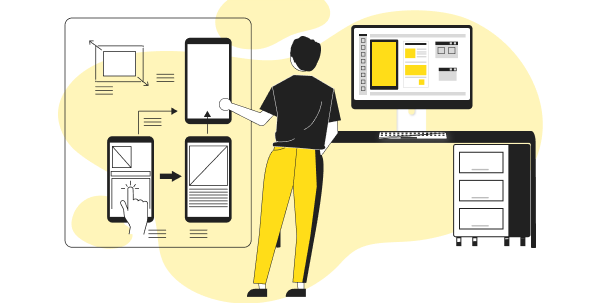


Providing exceptional user experiences (UX) is critical to the success of any product or service in the cutthroat digital market of today. These experiences are shaped in large part by user interface (UI) design, which affects how consumers engage with and view your product. We at Weekend UX are committed to assisting you in improving your design skills and producing user-friendly interfaces that produce profitable outcomes. We'll provide professional advice and techniques to help you become a UI/UX design wizard and engage your audience in this extensive tutorial.
It is your responsibility as a UI/UX designer to keep the website's simplicity and clarity. Refrain from overcrowding the page with graphics or photos. Make use of the "internal links" to increase the informational value of the page by enabling users to click on the link for more information. Make sure that the elements you use, font size, navigation, and color scheme are all the same on every one of your webpages. The page patterns that are used consistently by all website designs, such as the header, hero image, service section, testimonial, contact us, and footer area, should be followed by UI/UX designers.
In visual design, use more white space to make every design cluster free, tidy, and aesthetically beautiful. The user's appearance and experience can be altered by including a small amount of white space between the pieces. Good UI designers also consider paragraph space and line height. The use of white space inside text, image, and tile elements draws the user in and influences their decision to remain on the page.
Prior to starting the UI/UX design process, gather as much information as possible from the audience. This will help you get to know your users better. What benefits can you provide users who choose your products over those of competitors? UX designers ought to create a unique product and incorporate cutting-edge features that put the user closer to the product. Although conducting user research takes a while, the results are satisfying and guarantee that your users' needs are met in full. To ensure high-quality user research, make as many contacts as you can.
When filling out the form, the user enters their own password, but the UI/UX design suggests a format that they should adhere to in order to proceed correctly. In terms of loading speed, certain pages load incorrectly and go to the correct navigation page. Whether a click is right or incorrect, users should still be aware of what they are clicking on.
Give User Research Priority:
Put Clarity and Simplicity First:
Make Use of Consistency:
Make sure it's accessible:
Give Affordability and Feedback:
Adopt an Iterative Design Methodology:
Keep Up with Technology and Trends:
In conclusion, you may improve your product's user experience and set it apart in a crowded market by using these design concepts. We at Weekend UX are dedicated to assisting you in designing user interfaces that excite and please users in addition to fulfilling their demands. You can create amazing user experiences that propel business success by centering your design process around users, emphasizing clarity and simplicity, keeping consistency, guaranteeing accessibility, offering feedback and affordance, designing for emotion and delight, and adopting an iterative design approach.